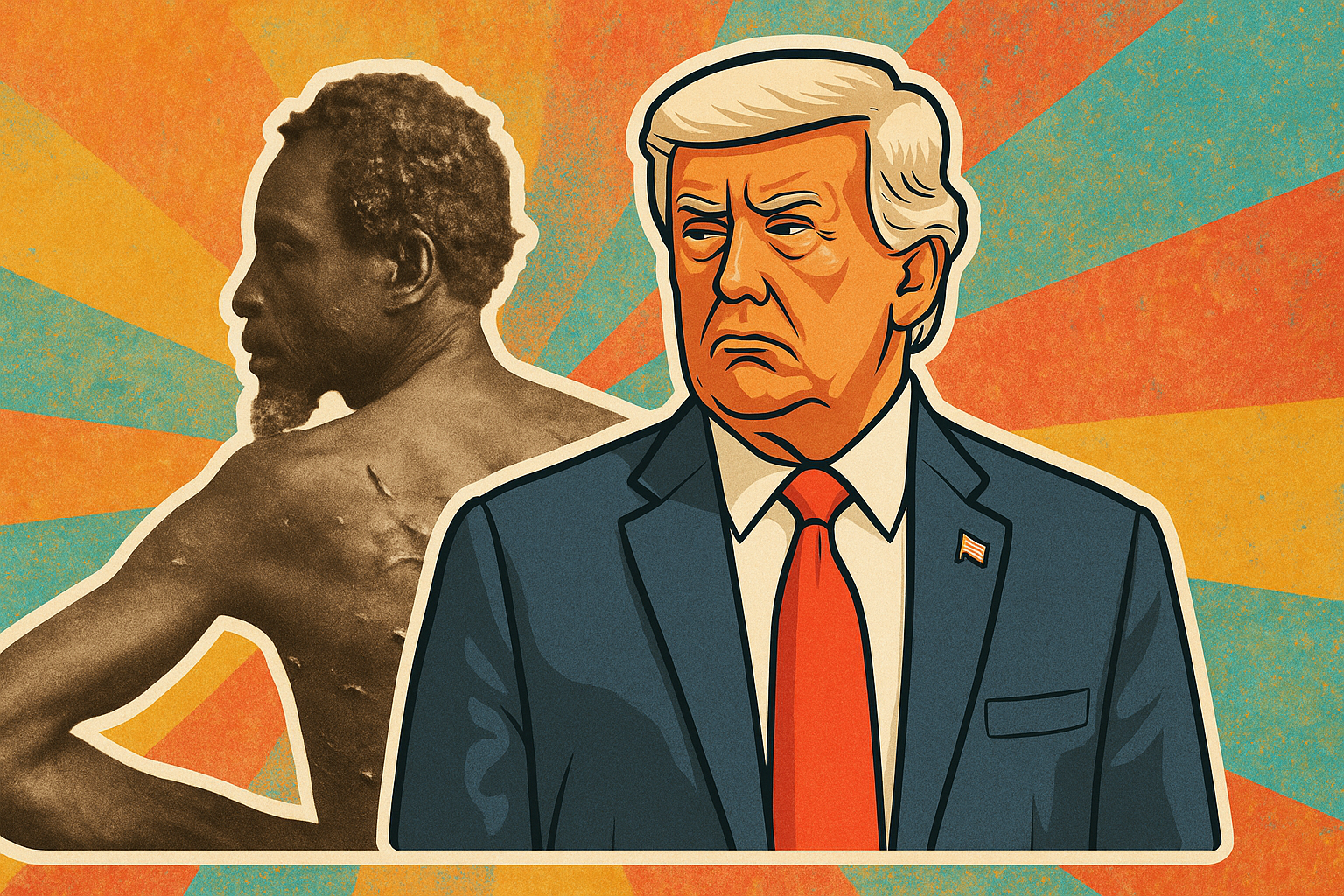5 Shocking Facts: Trump’s Removal of Slavery Exhibits Sparks Outrage
Introduction
On September 15, 2025, the popular X account @PopCrave posted a viral tweet that shocked historians, civil rights activists, and social media users alike. The post (ID: 1967716540591333427) claimed that the Donald Trump administration ordered the removal of all slavery-related exhibits from U.S. national parks.
Accompanied by two images—Donald Trump in his signature red tie and the haunting 1863 photo of “The Scourged Back”—the tweet ignited intense debate about history, censorship, and America’s collective memory.
The Donald Trump administration has ordered the removal of all exhibits/signs related to slavery at numerous national parks. pic.twitter.com/G6Zij3MouM
— Pop Crave (@PopCrave) September 15, 2025
Details of the Viral Tweet
- Posted by: @PopCrave
- Time: 22:25 UTC, September 15, 2025
- Content: “The Donald Trump administration has ordered the removal of all exhibits/signs related to slavery at numerous national parks.”
-
Images Included:
- Donald Trump in a dark suit and red tie with a U.S. flag pin.
- The historic photo of Peter Gordon, an escaped slave, whose back was scarred by brutal whippings—widely known as “The Scourged Back.”
The tweet linked to an external article, though its content could not be accessed due to technical restrictions.
Why This Matters: The Policy Behind the Tweet
The move aligns with Trump’s 2025 executive order, “Restore Truth and Sanity to American History,” which directed the National Park Service to remove exhibits that were deemed “disparaging” to Americans. This included references to:
- Slavery
- Native American displacement
- Environmental damage
Historians have described this as historical revisionism, warning that sanitizing the past erases essential lessons for future generations.
Public Reaction on X
The tweet went viral, sparking heated discussions:
- Criticism of Historical Erasure: Users like @joysopinions called the decision “racist.”
- Comparisons to Propaganda: Some compared it to Nazi-style censorship.
- Historians’ Concerns: Governor Josh Shapiro and other officials condemned the move, warning that it could distort America’s narrative.
- Grassroots Pushback: Hashtags like #SaveOurHistory and #DoNotErase began trending.
Historical Context: Why “The Scourged Back” Matters
- Taken in 1863: by McPherson & Oliver, the photo shows escaped slave Peter Gordon’s back covered in deep scars from whippings.
- It became a powerful abolitionist image, widely circulated during the Civil War.
- For many, it remains one of the most undeniable pieces of visual evidence of slavery’s brutality.
- Its potential removal from parks symbolizes the danger of erasing history to promote national pride at the expense of truth.
FAQs
Q1: Did Trump really order slavery exhibits removed?
Yes, according to reports and the viral tweet, his administration issued an executive order targeting such displays in 2025.
Q2: Why are people upset?
Critics argue that erasing slavery from public memory is dangerous, dishonest, and deeply disrespectful to victims of America’s past.
Q3: What is “The Scourged Back”?
It’s a famous 1863 photograph of Peter Gordon, an escaped slave, whose scars highlight the inhumanity of slavery.
Q4: How are historians responding?
Historians and civil rights leaders have condemned the policy as revisionist history that undermines education and truth.
Conclusion
The @PopCrave tweet highlighting Trump’s policy has opened a fierce national conversation. For supporters, the move is about protecting national pride; for critics, it is an alarming attempt to whitewash history.
This clash over historical memory raises profound questions: Can a nation truly move forward if it erases its painful past? Or is confronting these truths essential to building an honest future?
Opinion (Deep Reflection)
The controversy surrounding Trump’s order is not merely about exhibits—it reflects a deeper struggle over collective memory. Nations often grapple with how to present their past: should history emphasize pride and achievement, or should it confront the darker truths that shaped society?
Erasing slavery from public spaces may create a more comfortable narrative for some, but it risks silencing the voices of millions who suffered under bondage. At the same time, it forces us to ask: How much of history should be preserved in the public sphere, and how much belongs in textbooks, museums, or private study?
Ultimately, the debate is not about Donald Trump alone. It is about the fragile relationship between truth, power, and memory. Whether one agrees or disagrees with the policy, the discussion it sparks is crucial: History is not just about the past—it is about the values we choose to uphold today.


0 comments